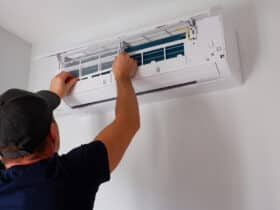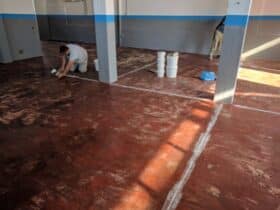How to deal with toilet flush button?
All of us encounter commode issues. Most typical of those troubles are those worrying toilet flush button. In many instances, we face the problem of frequently running water due to some fault in the flush device. Are you searching for the solution “just how to repair bathroom flush switch?” Right here are gone over the causes, effects and also convenient treatments for your running flush systems.
When the toilet is running continuously and triggering tremendous pain and loss of water, then it is an indication to fix your flush. Before opting for that, see if you examine that your flush shutoff or fill shutoff is not malfunctioning.
Listen to someone precisely that individual that has some knowledge in plumbing. Below are Lightened some of the time conserving, easy and convenient steps for your flush (double button) repairing.
STEP:1
After that, if you have turned off the water supply line, switch on the water and look inside the container. Determine if the water level is climbing so high, it is draining right into the overflow pipe if the solution is, of course, after that, following the steps for cleaning up the fill valve.
STEP: 2
If purging particles (Cleaning up Solution) does not fix the issue; Change the fill valve. Buy a replacement shutoff.
You don’t need to match the old one; several, like the one revealed, fit most commodes. It’s a 15-minute change-out.
Flushing Particles (Cleansing Remedy)
It is feasible for dirt as well as particles to lodge themselves inside the shutoff. This can happen at any time the water is on and may occur after a brand-new setup, a couple of days later or even months and years after installment.
Follow these steps to clean the valve.
- Turn off water and also flush the toilet.
- Please enter into the tank with your right hand, lift the floating mug, and grip the grey shaft and hold it because of placement.
- With your left hand, order the cap and, at the exact time, location your thumb on the side of the plastic arm.
- Twist both the plastic arm and cap counterclockwise 1/8th turn. Weigh down on the lid while making a fast-twisting activity.
- Lift on cap and relocate far from the top of shutoff body. Utilizing a cup, hold the mug upside-down over the subject opening of the valve and also activate the supply of water full blast for 10-15 seconds. Look inside the valve to ensure no debris is left inside the valve.
- Reverse steps to position leading back on the shutoff. Activate water and also flush commode to ensure trouble has been resolved.
- If this treatment does not solve the concern after replacing the fill valve, we need to resolve the concern tank.
STEP:3
With the tank loaded with water, turn off the water to the bathroom and mark the present water level inside the container. Wait a period of 10-15 minutes and note if the water is draining down from your mark. Suppose it drains pipes down change the flapper initially as this is the most typical issue.
STEP:4
If you change the flapper and the bathroom remains to drain pipes down (repeat action two if necessary), then we suggest changing the flush valve as this will ultimately stop the constant draining pipes of water from the container to the bowl (where stool is thrown).
STEP:5
If the toilet is running at any moment, as well as you see water on the flooring, promptly switch off water as well as look inside the container to see if the water is originating from the lid or tank bar location. Replace the fill valve and also replace the flush valve. The flush shutoff is readied to the incorrect elevation or may be blocking the course of the water to drain pipes safely right into the toilet bowl. If water is draining down and the water is coming out from the all-time low of the storage tank, change storage tank bolts and washers.
Commodes that have remained in usage for some time can establish a careless or weak flush. It is pretty typical for minerals such as calcium and lime, together with debris fragments such as rust to create in the bathroom bowl’s rim feed and jet holes. Over time, these down payments restrict and block water from moving right into the bathroom bowl, which will cause a weak flush.
1. Cleaning up the rim (feed holes) as well as jet holes of your commode
- Turn the water valve off.
- Open the flapper, let most of the waterfall out of the tank.
- Utilizing a commode dish cleaner, hold the flapper open and pour 1– 2 cups of cleaning option down the flush valve opening. Take care not to allow any cleaner to overflow into the tank. If it does, wipe it up immediately. Let the bathroom sit unused for numerous hrs or overnight. The cleaning service will work its method right into the circulation networks and aid to liquefy any mineral development.
- Utilizing a cord hanger, feed the hanger into the rim feed holes located under the lip of the toilet. Work the wall mount in and out of the holes numerous times to scratch away and damage complimentary any type of complex development.
- Transform the water supply back on as well as allow the storage tank refill. Flush the toilet several times to flush out any leftover cleansing service or deposits.
- To remove the jet, utilizing the wire wall mount, make a small hook at the end of the wall mount. Push the wall mount up right into the jet opening, as well as fish out any paper or waste that might trap in the jet passage.
2. Other causes for low or weak flush
Check the Water Level in the container. If your water level is more excellent than 1 inch below the top of the overflow pipeline, perhaps the low water level is not nearly enough for a great flush. Increase the level of water to within 1 inch of the top of the overflow pipe, utilizing the water level modification screw on the fill valve or changing the fill valve’s height.
Flapper shuts ahead of time. If the flapper closes swiftly throughout the flush, not enough water is launched to finish the colour.
NOTE: Make sure there is minimal slack on the flapper chain. There ought to only be a 1/2 inch slack of chain size required to operate the flapper for most bathrooms. If you have a toilet that utilizes 5.0 gallons per flush (GPF) or a lot more, make sure you are utilizing a non-adjustable flapper. If you have a bathroom that uses 3.5 GPF, 1.6 GPF or much less, inspect the flapper for adjustable setups.
3. Install brand-new fluid master set
If you have installed a brand-new Total Set or one of our adjustable flappers, see that the adjustable flapper setting is set appropriately.
View the top of the rubber part of the flapper. You will observe numbers roughly about 1– 9 (Minutes– Max). The number that is located directly before the chain is what the flapper is set on. The lower the number it is set to, the quicker the flapper will certainly close, allowing less water to eliminate from the tank. The higher the number it is set to, the longer the flapper will undoubtedly stay open, enabling more water to flush out of the storage tank.
Trial and error will determine the correct setting for your toilet. Drop 2– 3 items of toilet tissue in the bowl and also purge your bathroom. If the dish removes, reduced the setup on the flapper by one and flush once again. Repeat these steps up until the plate does unclear, then set the flapper one establishing higher from you’re not successful color. This will certainly provide you with one of the most effective (water savings and protection against overruling) commode flushes. Obstructed bathrooms can cause lots of diseases like pneumatically driven.
If your toilet is making sounds after that:
Ghost Flushing: This can happen intermittently, biking every few mins or every few hours. This refill noise is alerting you that your toilet is shedding water, either inside.
Fill Shutoff Hiss: A constant sound and sounds like forced air relocating through the bathroom.
Water Vibration: A sound you hear when the bathroom is purged, and the toilet is running water throughout its flush cycle.
Inner Water Loss
Inspect replenish tube first: If refill tube is placed or shoved right into the overflow pipeline, remove it and reattach, clipping the box to the overflow pipeline. This will keep the pipe from entering the overflow pipeline and quit the leak.
Tidy bottom of the storage tank and flapper area as well as change flapper.
Change flush valve drainpipe (last option if 1 and 2 do not deal with the concern).
Outside Water Loss:
Water draining from the bottom of storage tank around fill shutoff and water system link: Leakages coming from the all-time low of the fill valve that has been in usage for an extended period (not new installations fresh rounds) ought to be removed in addition to the supply line and also changed.
Water draining pipes from the bottom of the container from the fill shutoff and water link: Remove fill valve and clean base of tank both inside and outside. See to it the shank washing machine is positioned on fill valve initially (it is developed to seal tank from the inside of the container) and set up shutoff actuator. Hand tighten the fill shutoff lock nut. If utilizing water line older than five years replace supply line sometimes bettor.
Leakages coming from under the storage tank onto the toilet dish: These leaks indicate failed bolt seals. The storage tank to bowl gasket as well as toilet bolts with washing machines needs to be changed.
2. Load Valve Hiss:
This noise is warning you that water is continually passing through the fill shutoff and going into the container.
Here are some steps for eliminating the top cap and flushing out particles from the fill valve:
- Switch off the water supply and also flush the tank.
- Get inside the tank with your right-hand man under the floating mug, as well as lift it. With your right hand, hold onto the grey shaft keeping the floating mug up. Do not enable the float cup to go down or shutoff shaft to transform.
- Put your left hand on the top of the shutoff cap and position your left-hand thumb on the surface of the arm coming out of the top caroma. Turn the lid, as well as arm counterclockwise 1/8th of a, rely on unlock. You need to be able to lift off the cap and also the lever from the shutoff body.
- When the cap assembly has been eliminated, examine debris on the seal (rubber disc with pin coming through) and the shutoff part still in the tank.
- Hold a mug upside-down over the subject opening of the valve and switch on the water system full blast for 10-15 seconds, allowing the pressure to release any debris inside the valve inlet.
- Reconstruct the top of the valve by putting the cap arm beside the refill tube. To secure, push the cap down while turning it as well as the arm clockwise.
- The bottom hand is raising on the floating mug, which increases the black arm under the top cap. The full hand is clutching the cap while the thumb is continuing the raised lever arm.
3. Water Resonance:
Use a managed fill shutoff to stop the noise. These valves feature a regulator developed into the shutoff to decrease the incoming water by refurbishing or lowering the speed by the incoming water. We can quit the resonance noise that is happening.
If a Load Valve may not quit the problem after that, the build-up of particles in your shut down valve is so severe that we advise replacing the shutdown shutoff at the wall surface.
The above discussed are some of the convenient, rapid, and straightforward steps to repair your frequently running commode. This post is also gone over types of associated flush troubles like water vibration, ghost flushing, and fill valve hill. If your toilet flush is weak or incomplete, then which tips you must undergo are also discussed in this post. We think about flushing and also pipes problems as “exactly how to fix bathroom flush switch” remarkable and hard ones but they are easy to deal with and also repair if appropriate actions as well as cautions.















